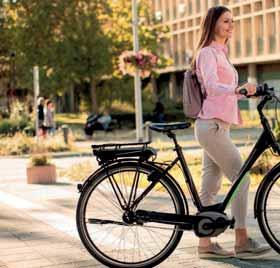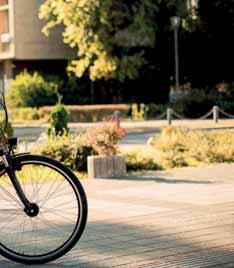
2 minute read
Replacement market boosts German e-bike sales
BERLIN, Germany – In addition to the regular market for e-bikes, the replacement market is becoming increasingly important in Germany. No less than 25% of consumers who intend to buy an e-bike already own one. This is a significant increase compared to previous years.
Ja n -W illemvan S c haik

These e-bike sales trends were reported by the annual GfK E-bike Monitor 2022. Besides Germany, the GfK E-bike Monitor 2022 also covers the Netherlands, Belgium, France and Italy, and the study shows remarkk able differences between these markets in consumer preferences and buying behaviour. The GfK E-bike Monitor shows that German consumers who buy an e-bike for the second time base their choice of brand on their experience with their current e-bike. These potential customers indicate that mostly poor service from the current brand is the main reason for choosing a different brand for their next purchase. In Germany, the main reason for buying an e-bike is to get more exercise, regardless of whether this concerns the first or second e-bike. GfK also sees that more and more people are opting for an e-bike as an alternative to a car. About 45% say they use their e-bike once or more a day
In Belgium, consumers are increasingly buying an e-bike to commute, according to the annual GfK E-bike Monitor 2022. For 35% of customers, this is the most important motivation to buy an e-bike. The target group between 35 and 49 years has increased significantly, which is exactly the group that uses their e-bike to go to work. Nevertheless, consumers also continue to use the e-bike recreationally

Young Dutch people want e-bikes

In the Netherlands, the age group 18-24 years old represents the biggest growth market. More and more young people are c ycling to school or university on an e-bike, according to GfK figures. Recreational use and commuting are still the largest segments, but compared to 2021, there is a clear increase in the use of e-bikes to go to school or university. In the Netherlands, already 10% of all kids between 12 and 18 go to school on an e-bike, as a recent market survey by Panel, commissioned by Stella Bic ycles, showed. The younger people clearly have diff ferent preferences than what was until now known as the main categor y. According to GfK, it is striking to see that young people focus less on quality but appreciate topics like speed and technical innovations such as GPS tracking and smart connectivity more.
Online sales increasing
The buying behaviour of these younger customers is also different. In the age group 18-24 years, no less than 60% buy their e-bike online, while on the total market, 75% prefer to buy an e-bike in a physical store with several brands. Also, the Belgium market sees growing importance in online sales, although physical stores remain the most dominant channel. In 2022, about 80% of Belgian buyers who visited a bic ycle store to look for an e-bike took a test ride. In France and Italy, the customer journey is different than in Benelux and Germany. In France, most e-bikes are bought in brick-and-mortar shops where all sorts of sporting goods are sold. Almost 50% of e-bike customers choose this option. In Italy, more than 30% of e-bike customers opt for a sporting goods store
The GfK E-bike Monitor started in the Netherlands in 2018. Later, Belgium and Germany were included in the Monitor, while this year, France and Italy have been added. The annual study clearly shows trends in the target group, motivation, and purchase behaviour. The sample in the Netherlands includes 2,000 respondents, around 1,000 in Germany and Belgium, and 500 in both France and Italy. The survey was conducted in September






